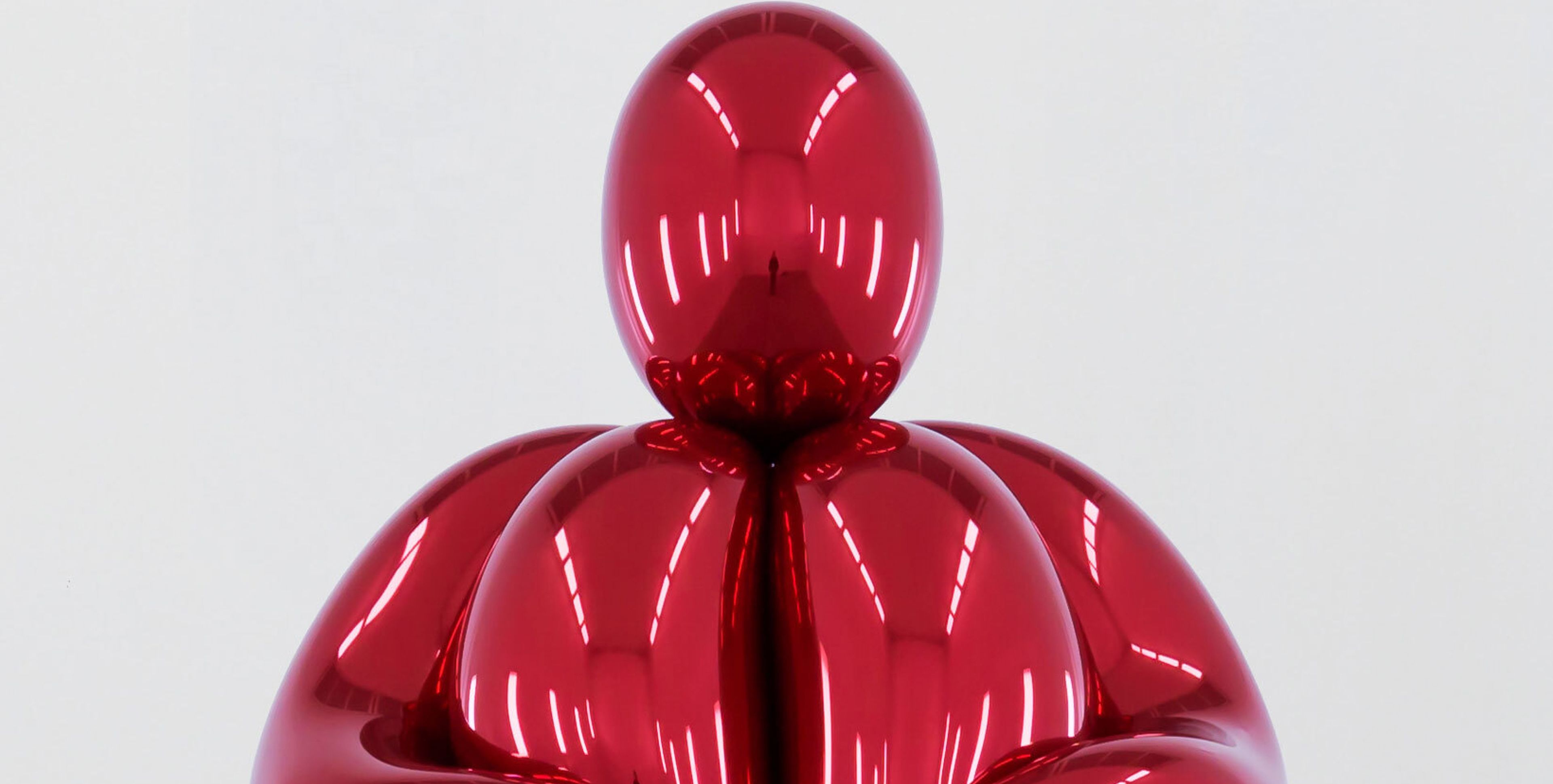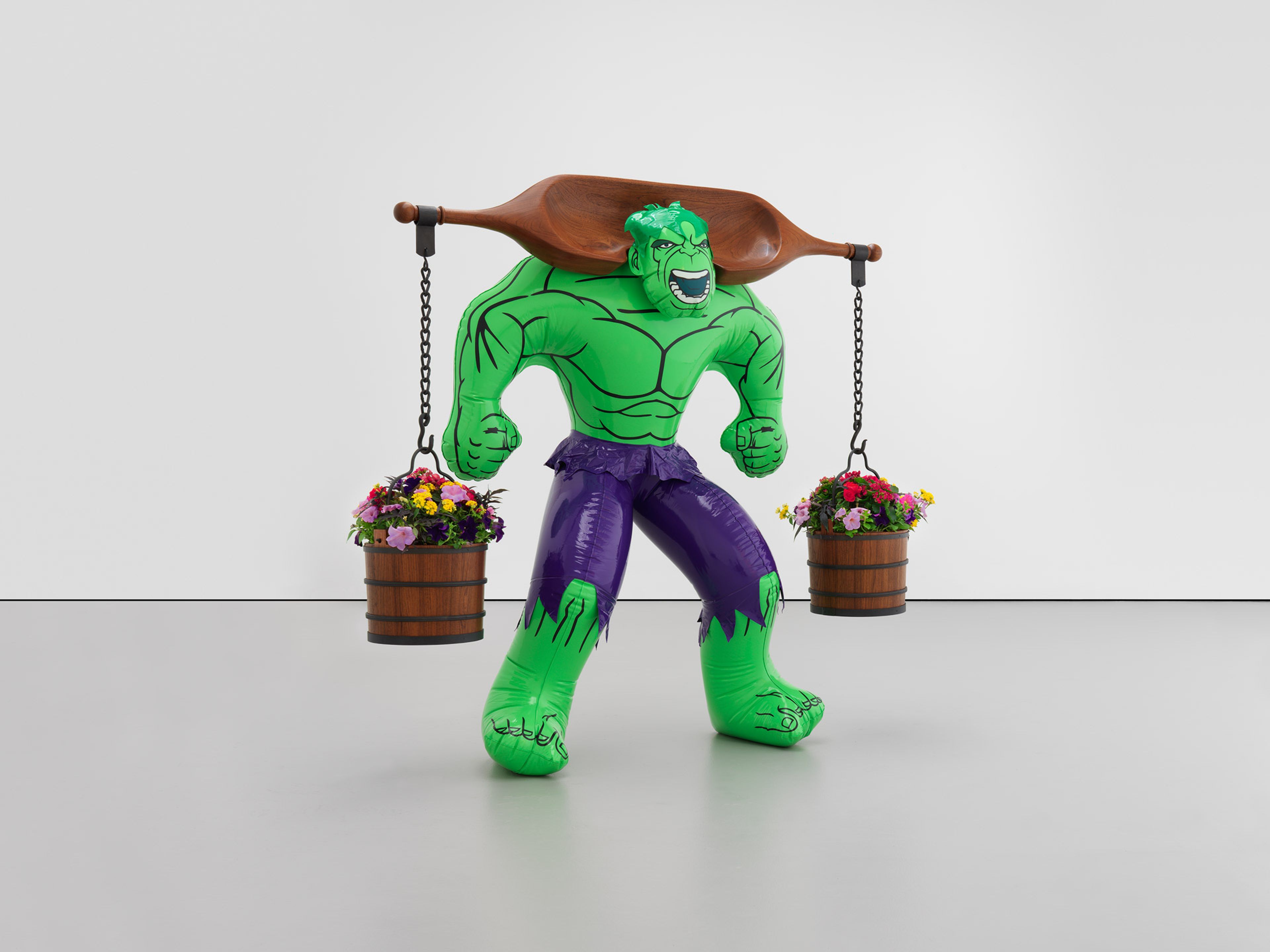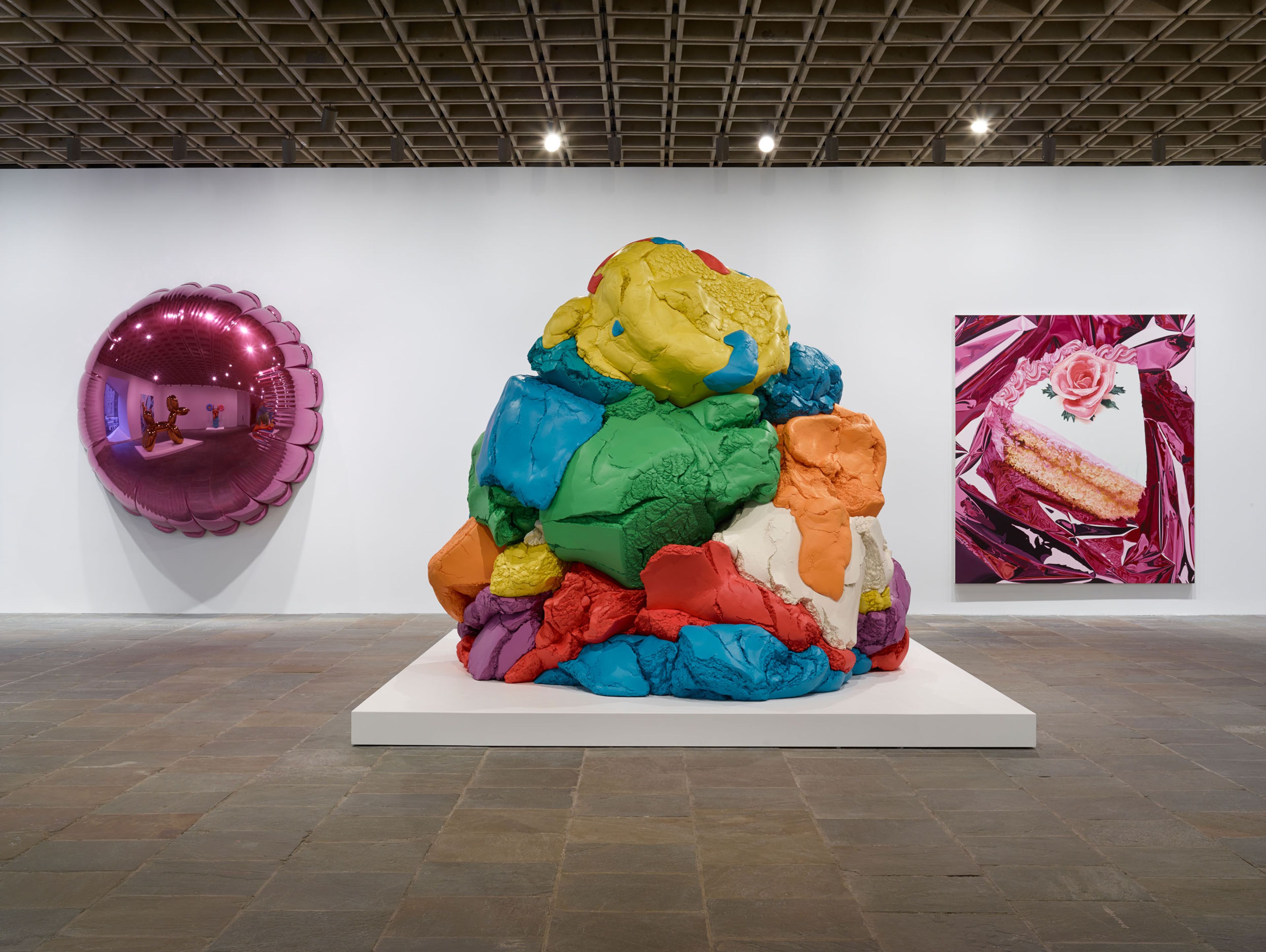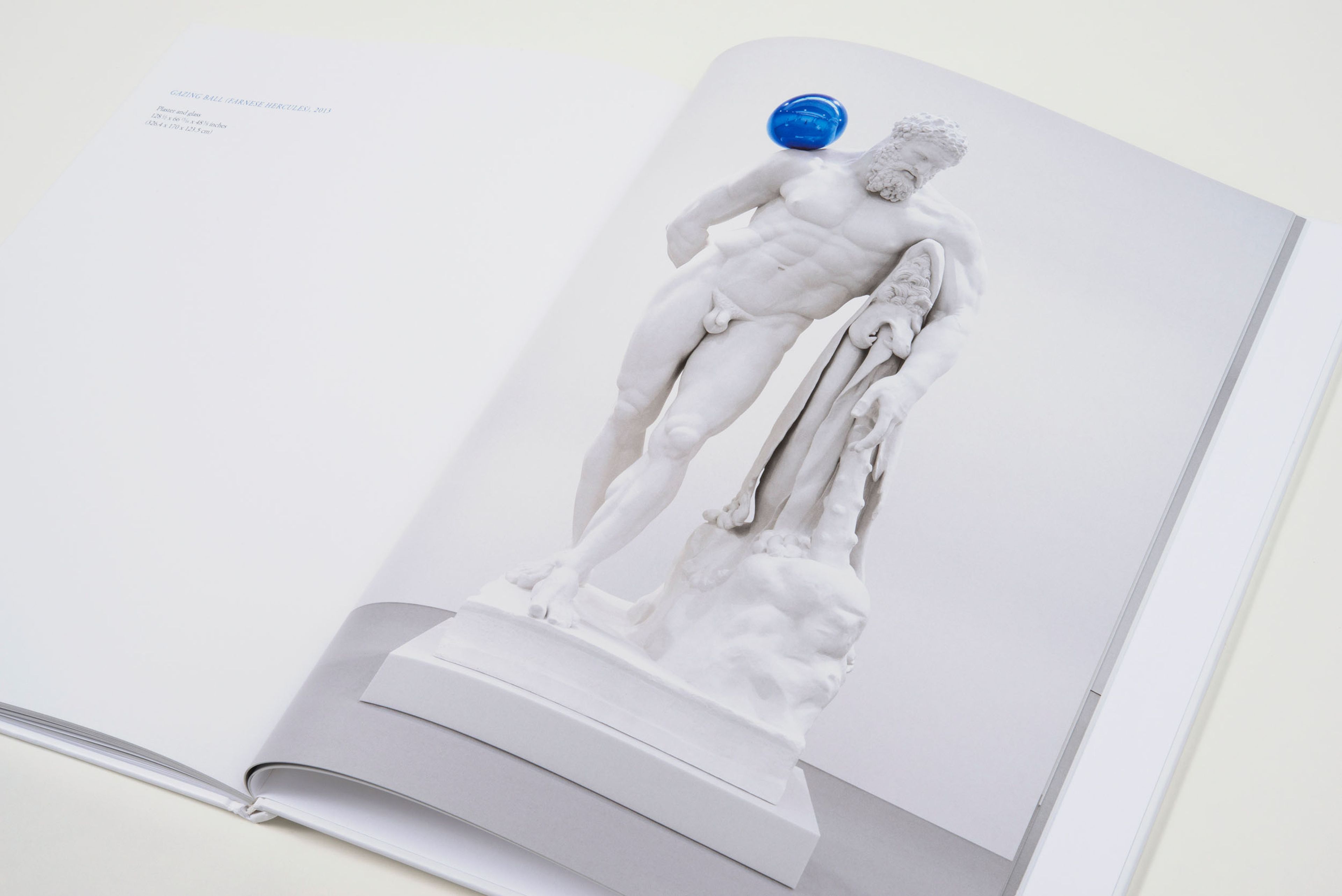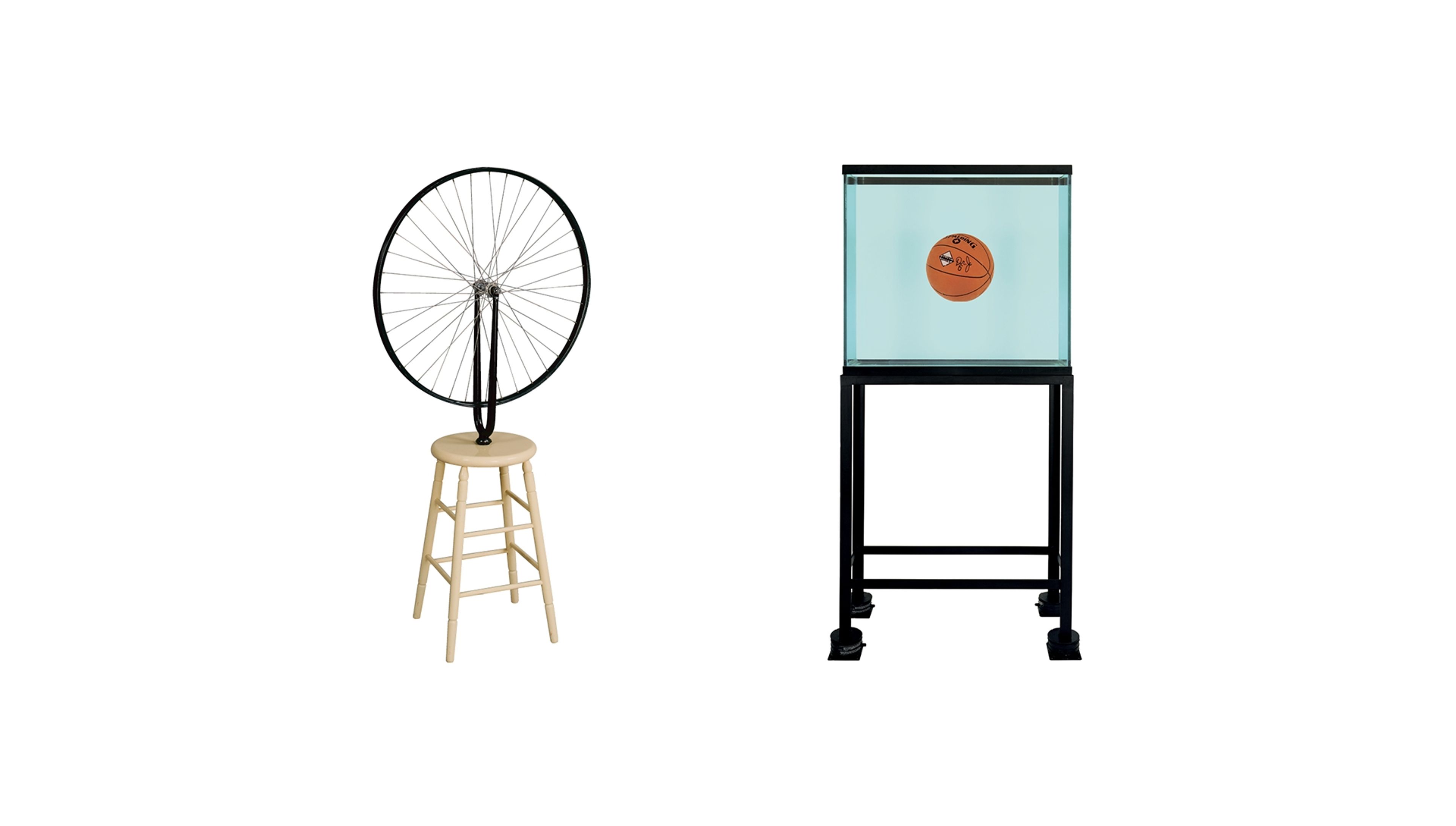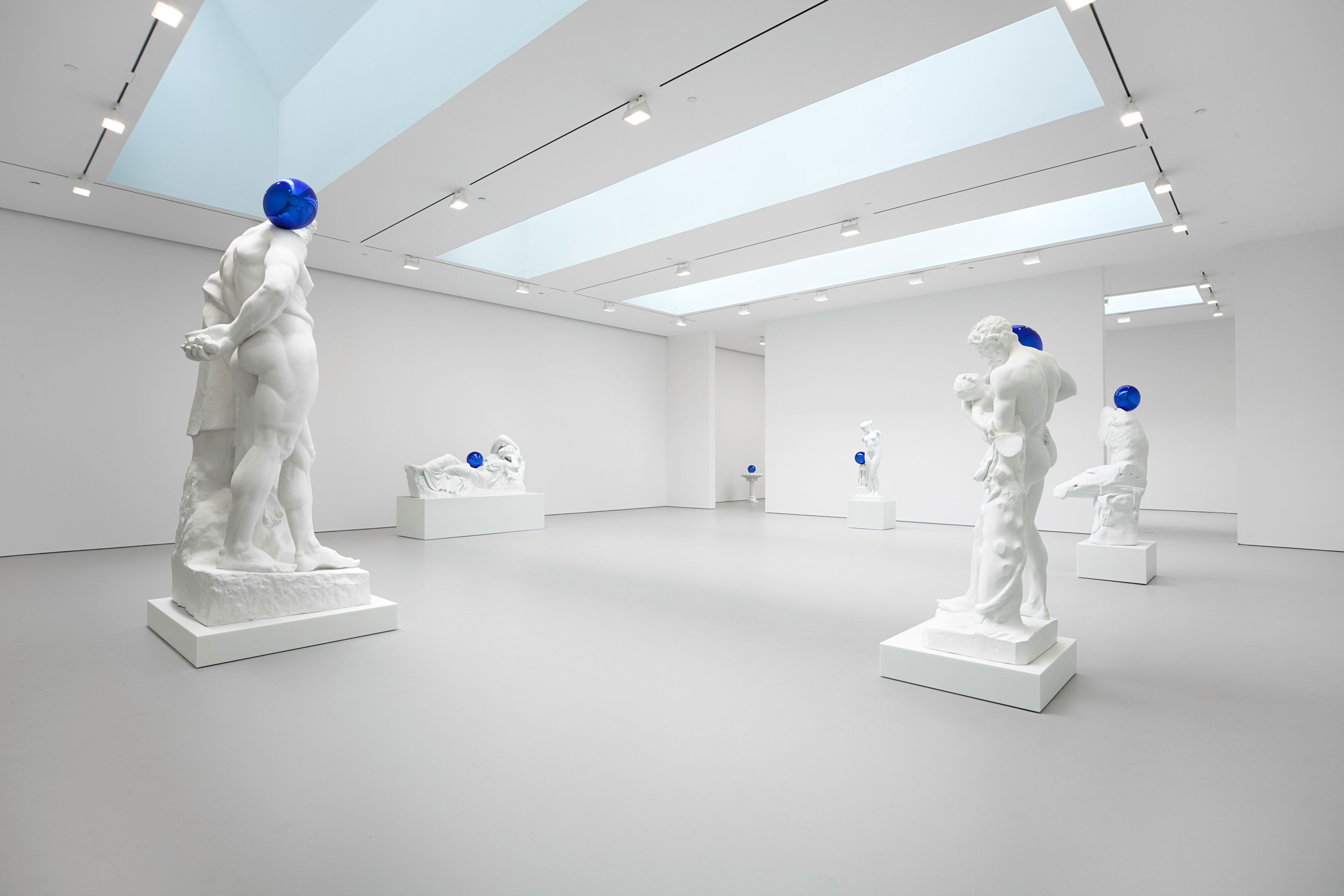Jeff Koons
American artist Jeff Koons is widely regarded for his bold paintings and monumental sculptures that hold a mirror up to contemporary culture. Using the photorealistic and commercial aesthetic familiar from an earlier generation of Pop artists, Koons has generated his own universally recognizable style that frequently comprises smooth, highly reflective surfaces and bright, saturated colors.
Learn MoreExhibitions
Explore Exhibitions
Artist News
Biography
American artist Jeff Koons is widely regarded for his bold paintings and monumental sculptures that hold a mirror up to contemporary culture. Using the photorealistic and commercial aesthetic familiar from an earlier generation of Pop artists, Koons has generated his own universally recognizable style that frequently comprises smooth, highly reflective surfaces and bright, saturated colors. Koons typically works in series, tapping into subject matter from popular culture and art history that is frequently reminiscent of childhood in order to, as he notes, empower the viewer towards achieving a state of personal transcendence.
Born in 1955 in York, Pennsylvania, Koons studied at the Maryland Institute College of Art in Baltimore and the School of the Art Institute of Chicago. He received his B.F.A. from the Maryland Institute College of Art in 1976. Koons began working with David Zwirner in 2012. His inaugural exhibition at the gallery in New York debuted a new series of sculptures, titled Gazing Ball, in 2013.
The artist’s first solo exhibition took place in 1980 at the New Museum in New York. In 1988, his first American survey was held at the Museum of Contemporary Art in Chicago. From 1992 to 1993, two retrospectives toured throughout the United States and Europe at venues including Aarhus Kunstmuseum, Denmark; San Francisco Museum of Modern Art, San Francisco; Staatsgalerie Stuttgart; Stedelijk Museum, Amsterdam; and Walker Art Center, Minneapolis, Minnesota.
In 2014, a retrospective of Koons's work comprising over one hundred sculptures and paintings that date from 1978 to the present was hosted by the Whitney Museum of American Art in New York, marking the artist's first major museum presentation in New York. The show traveled to Centre Georges Pompidou, Paris later that year, followed by the Guggenheim Museum Bilbao, Spain in 2015. In 2019, Museo Jumex in Mexico City presented the two-person exhibition Appearance Stripped Bare: Desire and the Object in the Work of Marcel Duchamp and Jeff Koons, Even.
Jeff Koons: Absolute Value / From the Collection of Marie and Jose Mugrabi was on view at the Tel Aviv Museum of Art in 2020-2021. Also in 2021, Koons will be the subject of a focused exhibition at Palazzo Strozzi, Florence entitled Jeff Koons. Shine, which will be the largest exhibition of his work ever hosted in Italy.
Other solo exhibitions include those organized by DESTE Foundation for Contemporary Art, Athens (1999); Musée d'art Contemporain, Nîmes, France (2002); Museo Archeologico Nazionale, Naples (2003); Astrup Fearnley Museum of Modern Art, Oslo (2004), traveled to the Helsinki City Art Museum (2005); Château de Versailles, France (2008); Museum of Contemporary Art Chicago (2008); The Metropolitan Museum of Art, New York (2008); Neue Nationalgalerie, Berlin (2008); Serpentine Gallery, London (2009); Scottish National Gallery of Modern Art, Edinburgh (2011); Fondation Beyeler, Basel (2012); Schirn Kunsthalle Frankfurt and Liebieghaus Skulpturensammlung, Frankfurt, a joint exhibition (2012); Museo di Palazzo Vecchio, Florence (2015); De Nieuwe Kerk Amsterdam, Amsterdam (2018); and Ashmolean Museum of Art and Archaeology, University of Oxford, England (2019).
Work by the artist is held in public collections including The Broad, Los Angeles; Hirshhorn Museum and Sculpture Garden, Washington, DC; Los Angeles County Museum of Art; Museum of Contemporary Art, Tokyo; The Museum of Modern Art, New York; National Gallery of Art, Washington, DC; San Francisco Museum of Modern Art; Solomon R. Guggenheim Museum, New York; Stedelijk Museum, Amsterdam; Tate Gallery, London; and the Whitney Museum of American Art, New York. He lives and works in New York.
